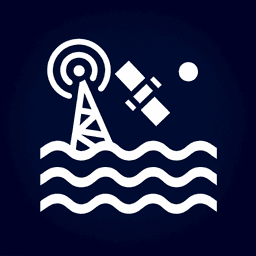
GMDSS: Definition, Purpose, and Key Components Explained
February 27, 2025
GMDSS (Global Maritime Distress and Safety System)
The Global Maritime Distress and Safety System (GMDSS) is an internationally agreed-upon set of safety procedures, types of equipment, and communication protocols used to increase safety and facilitate rescue operations for ships in distress. It was developed by the International Maritime Organization (IMO) and is mandatory for all ships subject to the International Convention for the Safety of Life at Sea (SOLAS).
Key Features of GMDSS:
- Automatic Distress Alerting: GMDSS enables ships to send distress alerts automatically, even if the crew is unable to do so manually. This is crucial in emergencies where time is of the essence.
- Global Coverage: The system provides global coverage through a combination of satellite and terrestrial communication systems, ensuring that ships can communicate distress signals from anywhere in the world.
- Multiple Communication Options: GMDSS incorporates various communication methods, including satellite communications, VHF, MF, and HF radio, to ensure redundancy and reliability.
- Search and Rescue Coordination: The system facilitates coordination with search and rescue services, improving the chances of a successful rescue operation.
Equipment Required:
Ships equipped with GMDSS must carry specific equipment, such as Emergency Position Indicating Radio Beacons (EPIRBs), Search and Rescue Transponders (SARTs), and Digital Selective Calling (DSC) capable radios. This equipment is essential for sending distress alerts and communicating with rescue services.
Importance for Mariners:
For mariners, GMDSS is a critical component of maritime safety. It ensures that in the event of an emergency, help can be summoned quickly and efficiently, significantly increasing the chances of survival and successful rescue. Mariners must be familiar with the operation of GMDSS equipment and procedures to ensure their safety at sea.
Understanding the Global Maritime Distress and Safety System (GMDSS)
The Global Maritime Distress and Safety System (GMDSS) is an internationally recognized safety system that enhances maritime safety and facilitates efficient rescue operations. It is a comprehensive communication system that uses a combination of satellite and terrestrial radio technologies to ensure that ships in distress can send alerts and receive assistance promptly.
Key Components of GMDSS
The GMDSS is composed of several critical components that work together to provide a robust safety net for maritime operations:
- Emergency Position-Indicating Radio Beacons (EPIRBs): These devices automatically transmit a distress signal to alert rescue authorities and nearby vessels.
- NAVTEX: A system that provides automatic delivery of navigational and meteorological warnings and forecasts, as well as urgent marine safety information to ships.
- Search and Rescue Transponders (SARTs): Used to locate survival craft or distressed vessels by creating a series of dots on a radar screen.
- Digital Selective Calling (DSC): A standard for sending pre-defined digital messages via the maritime radio system.
Who Needs GMDSS?
The GMDSS regulations apply to "compulsory" ships, which include:
- Cargo ships of 300 gross tons and over when traveling on international voyages or in the open sea.
- All passenger ships carrying more than twelve passengers when traveling on international voyages or in the open sea.
The Basic Concept of GMDSS
The fundamental concept of GMDSS is to ensure that search and rescue authorities ashore, as well as shipping in the immediate vicinity of a ship in distress, are rapidly alerted to a distress incident. This system allows for a coordinated search and rescue operation with minimal delay, significantly increasing the chances of survival for those in distress.
SOLAS Requirements for GMDSS
Under the International Convention for the Safety of Life at Sea (SOLAS), ships must be capable of receiving shore-to-ship warnings and distress alerts by either Digital Selective Calling (DSC) or NAVTEX. Additionally, ships must be able to transmit and receive distress signals between ships using VHF channel 13 and DSC.
For maritime users, understanding and implementing GMDSS is crucial for ensuring safety at sea. The system's comprehensive approach to communication and distress signaling makes it an indispensable tool for modern maritime operations.




